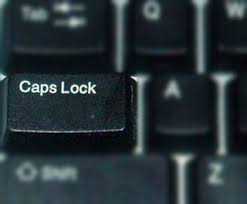Not Haunted
Take a look at the pic on the right side of this post. A 'For Lease' sign spotted in the French Quarter in New Orleans the other day. 
Pretty funny and clever bit of advertising by the leasing agent. It is always kind of refreshing to see something so familiar, like a 'For Lease' sign, taken in a slightly or even entirely new direction. 'For Lease' signs are everywhere, they tend to kind of blend in to the surroundings like so many other aspects of the urban landscape. But this one, with the 'Not Haunted' sign stood out. In fact, in the five minutes I was standing near the sign, at least 4 or 5 other folks stopped to take the same pic of the sign that I did.
It is pretty easy to see something like the 'Not Haunted' sign and have a reaction along the lines of 'Look at this example, HR/Business professional, and try to make your communications, job ads, emails etc. more punchy so that folks will stop and actually read/remember them.'
But I think you also need to be careful with that kind of approach and advice. You can reasonably go two ways with dropping the equivalent of a 'Not Haunted' in your standard communications.
The first way is that you actually do get folks to stop and notice your communication or job ad with some kind of edgy line or element. Just like people stopped on the street to laugh at and take pictures of the sign, mostly tourists that had no intention of actually inquiring about the apartment lease, your folks, many of whom that might not be in your target audience, will stop and notice/engage with your content. That is a win, mostly, but only a win if you have built up at least some credibility and trust as a communicator, and your moment of edginess has at least some context to support it. The 'Not Haunted' sign works in the French Quarter of New Orleans because in that place, themes of strangeness, weirdness, voodoo, and general fun prevail. 'Not Haunted' fits there.
And that takes us to the other way the equivalent for you of something like 'Not Haunted' can turn out, as something that seems completely out of place, or creates a suggestion or an implication of an experience that you can't deliver. If you suddenly start punching up job ads will all manner of clever and newly invented titles, edgy statements of company culture, and describe the ideal candidate in some kind of a combination of rock star, champion athlete, and Don Draper-level creative, you run the risk of coming off as a little bit insincere, and trying a little too hard.
'Not Haunted' works on the New Orleans sign because it fits the context, it's quick to digest, and it shows that the communicator understands the place and the mindsets of their audience. It's easy to tell folks they should be more clever and funny in their communications. It's much harder to do well. And it's even harder than that to do it quickly and concisely.
Take a lesson from the 'Not Haunted' sign sure, but make sure that lesson is that great, funny, memorable communications are a job for real pros. Like Don Draper maybe.
Have a great Tuesday!

 Steve
Steve



